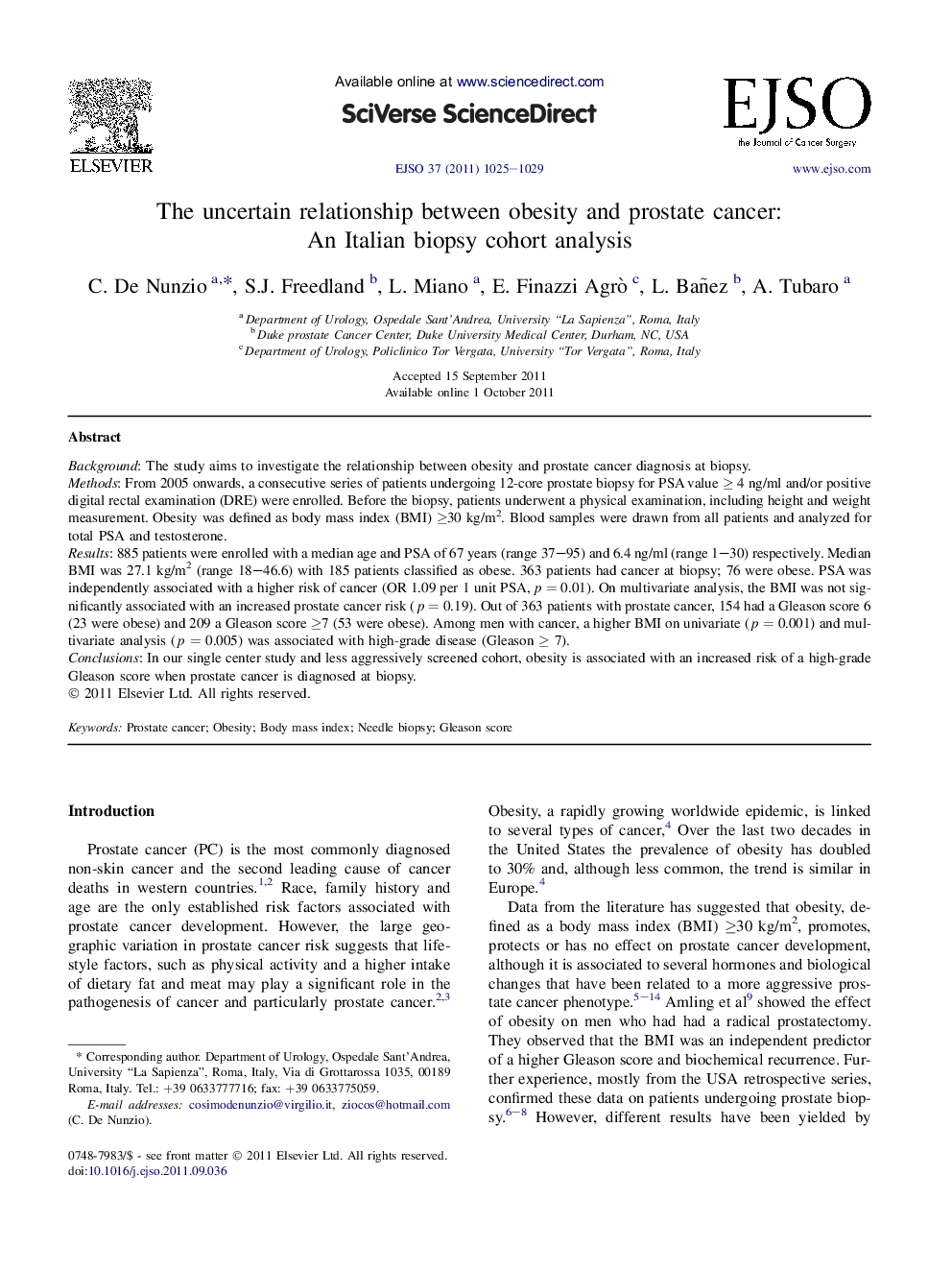| Article ID | Journal | Published Year | Pages | File Type |
|---|---|---|---|---|
| 6192220 | European Journal of Surgical Oncology (EJSO) | 2011 | 5 Pages |
BackgroundThe study aims to investigate the relationship between obesity and prostate cancer diagnosis at biopsy.MethodsFrom 2005 onwards, a consecutive series of patients undergoing 12-core prostate biopsy for PSA value ⥠4 ng/ml and/or positive digital rectal examination (DRE) were enrolled. Before the biopsy, patients underwent a physical examination, including height and weight measurement. Obesity was defined as body mass index (BMI) â¥30 kg/m2. Blood samples were drawn from all patients and analyzed for total PSA and testosterone.Results885 patients were enrolled with a median age and PSA of 67 years (range 37-95) and 6.4 ng/ml (range 1-30) respectively. Median BMI was 27.1 kg/m2 (range 18-46.6) with 185 patients classified as obese. 363 patients had cancer at biopsy; 76 were obese. PSA was independently associated with a higher risk of cancer (OR 1.09 per 1 unit PSA, p = 0.01). On multivariate analysis, the BMI was not significantly associated with an increased prostate cancer risk (p = 0.19). Out of 363 patients with prostate cancer, 154 had a Gleason score 6 (23 were obese) and 209 a Gleason score â¥7 (53 were obese). Among men with cancer, a higher BMI on univariate (p = 0.001) and multivariate analysis (p = 0.005) was associated with high-grade disease (Gleason ⥠7).ConclusionsIn our single center study and less aggressively screened cohort, obesity is associated with an increased risk of a high-grade Gleason score when prostate cancer is diagnosed at biopsy.
